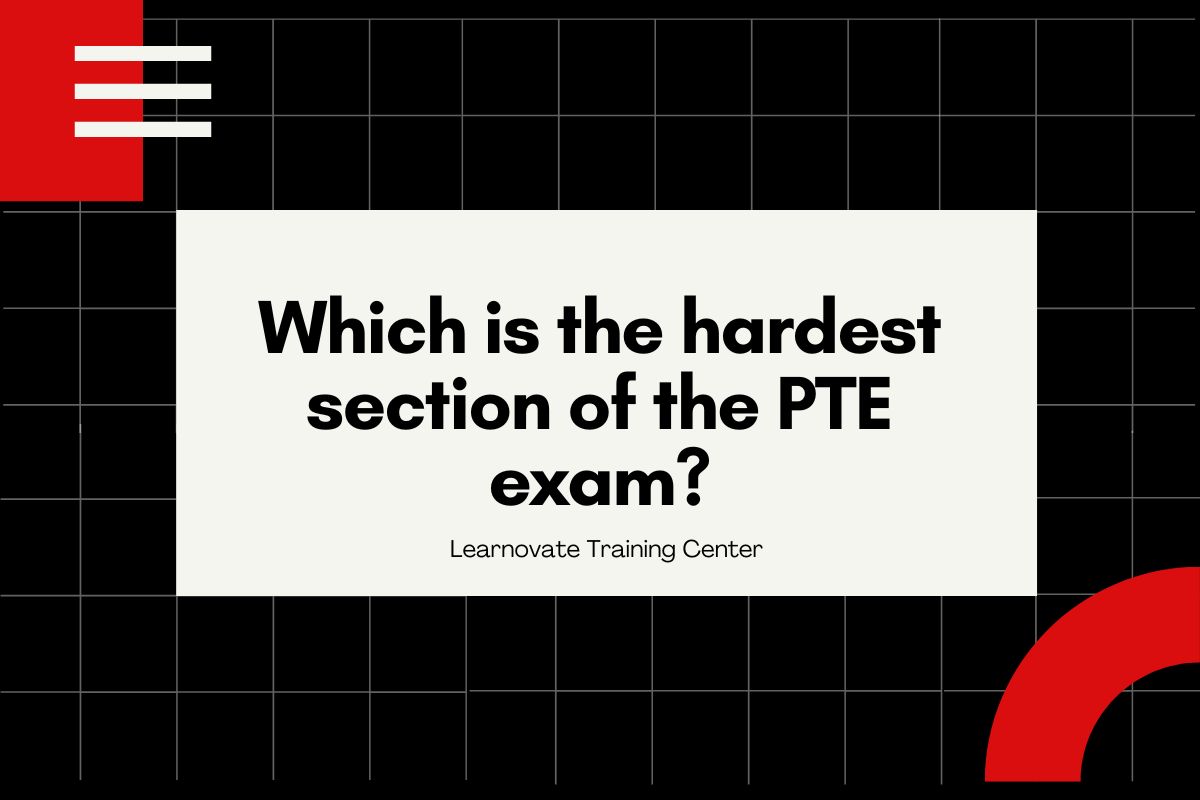The Pearson Test of English (PTE) Academic is widely regarded as a challenging English proficiency test, particularly due to its comprehensive assessment of speaking, writing, reading, and listening skills. While the difficulty level of each section may vary depending on the candidate’s strengths and weaknesses, some sections tend to be more difficult than others for most test-takers. This 2,000-word article will explore each section in detail and determine which poses the greatest challenge, offering insights and strategies to overcome the hurdles.
If you’re preparing for PTE, enrolling in a PTE course can help you master each section efficiently and improve your overall score.
Understanding the Structure of the PTE Exam
Before diving into which section is the hardest, it’s essential to understand the structure of the PTE Academic exam. The exam is divided into three main parts:
-
Part 1: Speaking and Writing (77-93 minutes)
- Personal introduction
- Read aloud
- Repeat sentence
- Describe image
- Re-tell lecture
- Answer short questions
- Summarize written text
- Essay (20 minutes)
-
Part 2: Reading (32-40 minutes)
- Multiple-choice, single answer
- Multiple-choice, multiple answers
- Re-order paragraphs
- Reading: fill in the blanks
- Reading and writing: fill in the blanks
-
Part 3: Listening (45-57 minutes)
- Summarize spoken text
- Multiple-choice, multiple answers
- Fill in the blanks
- Highlight correct summary
- Multiple-choice, single answer
- Select missing word
- Highlight incorrect words
- Write from dictation
Each of these sections tests different language skills, and the nature of the tasks varies in complexity and scope.
Factors That Determine Difficulty
While the hardest section of the PTE exam can be subjective, some universal factors contribute to the perceived difficulty of certain sections:
- Time Constraints: Many sections of the PTE exam require quick thinking and precision under time pressure. This is particularly challenging for tasks that involve writing or listening.
- Task Complexity: Some tasks, such as essay writing and re-ordering paragraphs, require higher cognitive processing and language understanding.
- Technical Language: In tasks such as summarizing spoken text or reading multiple-choice questions, the use of advanced vocabulary can make it harder for test-takers to comprehend the material.
- Test Environment: PTE Academic is conducted in a computer-based test center, and for some candidates, this environment can be intimidating, adding to the difficulty of certain tasks.
Now, let’s look at the hardest sections individually and see which stands out as the most challenging for most test-takers.
Speaking and Writing Section: The Challenge of Fluency and Coherence
The speaking and writing section is often considered challenging, particularly for non-native speakers who struggle with fluency and articulation. The following are some of the hardest parts of this section:
1. Repeat Sentence
This task requires you to listen to a sentence and repeat it exactly as you heard it. While this might sound simple, the sentences often contain complex structures and vocabulary, and the time to process and reproduce the sentence is minimal. This task tests not only your listening ability but also your short-term memory, which can be challenging under time pressure.
2. Describe Image
In this task, you are presented with an image (such as a graph, chart, or diagram) and are required to describe it in detail. The challenge here lies in interpreting the image quickly and articulating your response in a clear, coherent, and grammatically correct manner. Many test-takers find this task hard because it requires both analytical thinking and spontaneous speaking ability.
3. Essay Writing
The essay task asks candidates to write a well-structured, coherent, and grammatically accurate essay on a given topic. For many candidates, this is one of the hardest parts of the exam, as it requires both strong writing skills and the ability to organize thoughts clearly under time pressure. Additionally, non-native speakers may find it challenging to express their ideas in a formal academic tone.
Hardest Part in Speaking and Writing: Overall, the essay writing and description image tasks tend to be the hardest in this section. Essay writing, in particular, is daunting because it combines multiple skill sets: grammar, vocabulary, organization, and idea development.
Reading Section: The Puzzle of Re-ordering Paragraphs
The reading section of the PTE Academic tests comprehension skills and many candidates find this section manageable. However, some tasks in this section can be quite tricky.
1. Re-order Paragraphs
In this task, you are given a set of disordered sentences and are asked to arrange them in a logical sequence. This requires a deep understanding of the flow of ideas and the ability to recognize cohesive devices and topic sentences. For many test-takers, re-ordering paragraphs is one of the hardest tasks because it involves both critical thinking and an understanding of subtle language nuances.
2. Reading: Fill in the Blanks
Another challenging task is filling in the blanks, where candidates are provided with a text and are asked to select the most appropriate words to complete the sentences. The difficulty arises from the need to understand the context and choose words based on collocations, grammatical structure, and meaning.
Hardest Part in Reading: The re-order paragraphs task is widely considered the most challenging in the reading section. It requires not only linguistic knowledge but also logical thinking and a good grasp of text cohesion.
Listening Section: The Pressure of Summarizing Spoken Text
The listening section of the PTE Academic tests your ability to comprehend spoken English, which can be especially difficult for non-native speakers. The following tasks are often cited as the hardest in this section:
1. Summarize Spoken Text
In this task, you will listen to a short recording and then write a summary of the content. The challenge here is twofold: first, you must understand the key points of the spoken text, which may include complex or technical language and second, you need to condense that information into a coherent and concise written summary. The pressure of time makes this task particularly daunting.
2. Highlight Incorrect Words
This task requires you to listen to a recording while reading along with a transcript. You must identify and highlight any words in the transcript that do not match the recording. This task can be tricky, especially when the discrepancies between the transcript and the recording are subtle.
3. Write from Dictation
In this task, you will hear a short sentence and then write it exactly as you heard it. Like the repeat sentence task in the speaking section, this requires strong listening skills and good short-term memory.
Hardest Part in Listening:
The summarizing spoken text task is often considered the most difficult part of the listening section due to the complexity of the language used in the recordings and the challenge of summarizing accurately under time pressure.
Conclusion
After considering the difficulty of each section, it’s clear that the hardest section of the PTE Academic exam will vary depending on the individual. However, based on general feedback and the skills required, the listening section, particularly the summarized spoken text task, is often cited as the most challenging. The need to process spoken information quickly, summarize it accurately, and convey it in writing poses a significant challenge to many test-takers.
Tips for Overcoming the Hardest Section
-
Practice Summarizing
To overcome the challenges of the listening section, especially the summarizing spoken text task, practice summarizing short audio clips or news articles. Focus on identifying the main points and condensing them into clear, concise sentences. -
Improve Vocabulary
A broad vocabulary will help you in tasks like re-ordering paragraphs and fill in the blanks. Regular reading and vocabulary-building exercises will boost your comprehension and help you tackle difficult questions with ease. -
Take Mock Tests
Regular practice with mock tests is one of the best ways to improve your performance. Mock tests simulate real test conditions, helping you to become familiar with the time constraints and task types, and improving your confidence for the actual exam.
By focusing on these strategies, you can enhance your performance in the hardest sections of the PTE Academic and boost your overall score.













